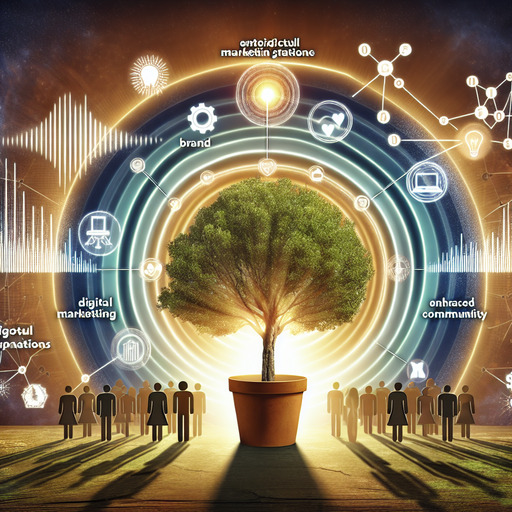
-
Table of Contents
- Effective Non-Profit Marketing Strategies: Engaging Donors and Amplifying Your Cause
- Understanding the Importance of Non-Profit Marketing
- 1. Building a Strong Non-Profit Brand
- 2. Leveraging Digital Marketing for Non-Profits
- 3. Enhancing Donor Engagement and Retention
- Conclusion: Amplifying Your Cause Through Strategic Marketing
- Questions and Answers
Effective Non-Profit Marketing Strategies: Engaging Donors and Amplifying Your Cause
In today’s competitive landscape, non-profit organizations must adopt innovative marketing strategies to stand out and effectively engage donors. With limited resources, non-profits need to maximize their outreach efforts to ensure their message resonates with potential supporters. This article explores actionable strategies for non-profit marketing, focusing on digital platforms, branding, and donor engagement.
Understanding the Importance of Non-Profit Marketing
Non-profit marketing is crucial for raising awareness, attracting donors, and driving engagement. By leveraging effective marketing strategies, non-profits can amplify their cause and make a significant impact. Let’s delve into some key strategies that can help your organization thrive.
1. Building a Strong Non-Profit Brand
Your brand is the face of your organization. A strong non-profit brand communicates your mission, values, and impact effectively. Here are some steps to build a compelling brand:
- Define Your Mission: Clearly articulate your mission and values to create a consistent message.
- Visual Identity: Develop a cohesive visual identity, including a logo and color scheme, that reflects your mission.
- Storytelling: Use storytelling to connect emotionally with your audience, sharing impactful stories of those you help.
For example, Charity: Water uses powerful storytelling and a consistent visual identity to engage supporters and communicate their mission effectively.
2. Leveraging Digital Marketing for Non-Profits
Digital marketing offers cost-effective ways to reach a broader audience. Here are some strategies to consider:
- Social Media Engagement: Utilize platforms like Facebook, Instagram, and Twitter to share updates, stories, and engage with your audience.
- Email Campaigns: Develop targeted email campaigns to keep donors informed and engaged with your cause.
- SEO Optimization: Optimize your website for search engines to increase visibility and attract organic traffic.
Consider the case of the ALS Association’s Ice Bucket Challenge, which went viral on social media, raising over $115 million for ALS research.
3. Enhancing Donor Engagement and Retention
Engaging and retaining donors is vital for long-term success. Here are some strategies to enhance donor engagement:
- Personalized Communication: Tailor your communication to individual donors, acknowledging their contributions and impact.
- Regular Updates: Keep donors informed about your organization’s progress and how their donations are making a difference.
- Recognition Programs: Implement recognition programs to show appreciation for your donors’ support.
For instance, World Wildlife Fund (WWF) uses personalized communication and regular updates to maintain strong relationships with their donors.
Conclusion: Amplifying Your Cause Through Strategic Marketing
Effective non-profit marketing strategies are essential for engaging donors and amplifying your cause. By building a strong brand, leveraging digital marketing, and enhancing donor engagement, your organization can make a significant impact. Remember, the key is to communicate your mission clearly and connect emotionally with your audience.
For more insights on non-profit marketing strategies, you can explore this Wikipedia page on Nonprofit Organizations.
Questions and Answers
Q1: How can non-profits effectively use social media for marketing?
A1: Non-profits can use social media to share impactful stories, engage with their audience through interactive content, and run targeted ad campaigns to reach a broader audience.
Q2: What are some cost-effective digital marketing strategies for non-profits?
A2: Cost-effective strategies include leveraging social media platforms, optimizing your website for SEO, and using email marketing to engage with donors and supporters.
Q3: How can non-profits improve donor retention?
A3: Non-profits can improve donor retention by personalizing communication, providing regular updates on the impact of donations, and implementing recognition programs to show appreciation.
If you’re interested in learning more about our services or have questions about this blog, please reach out to us via our contact page.